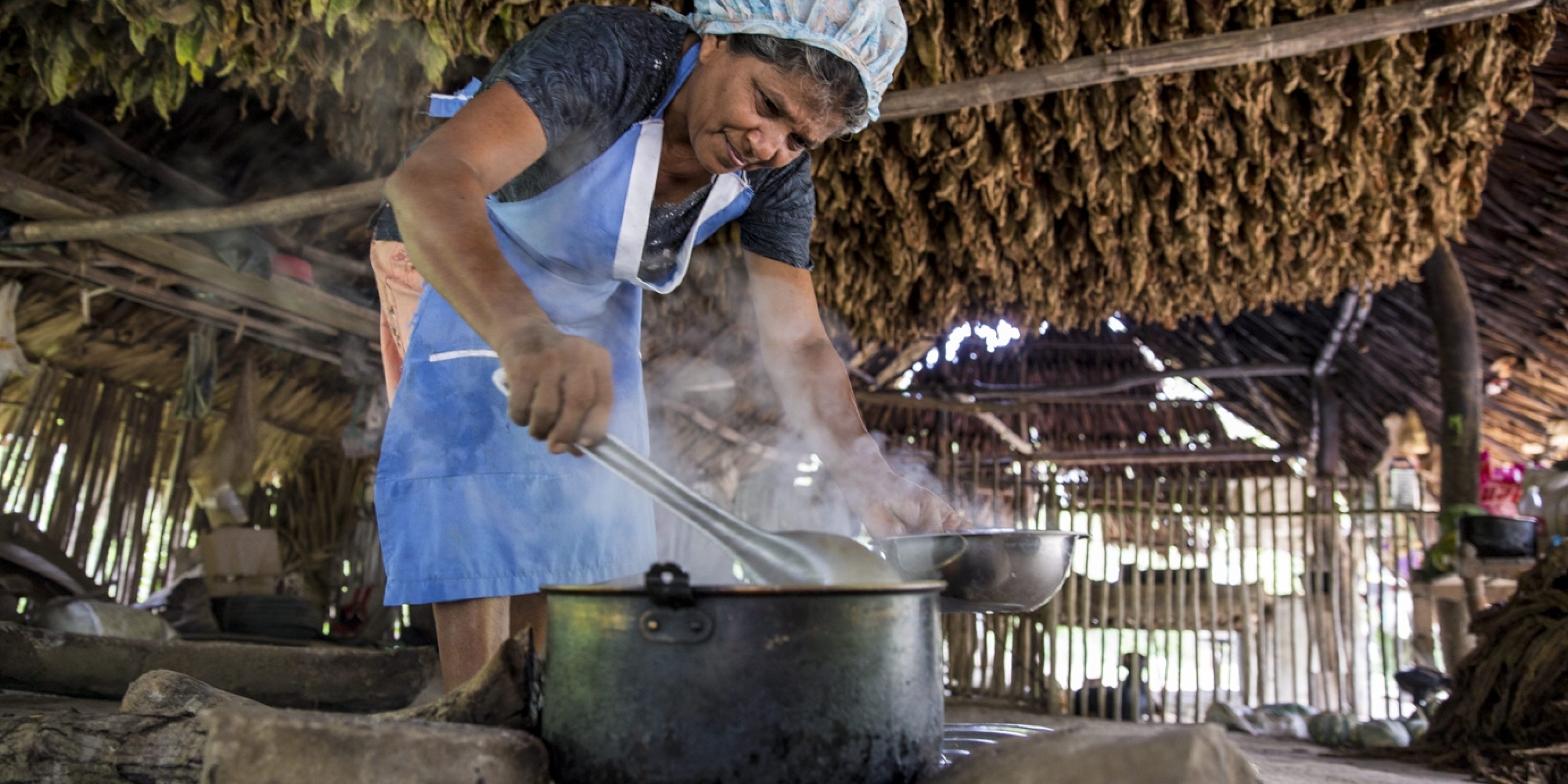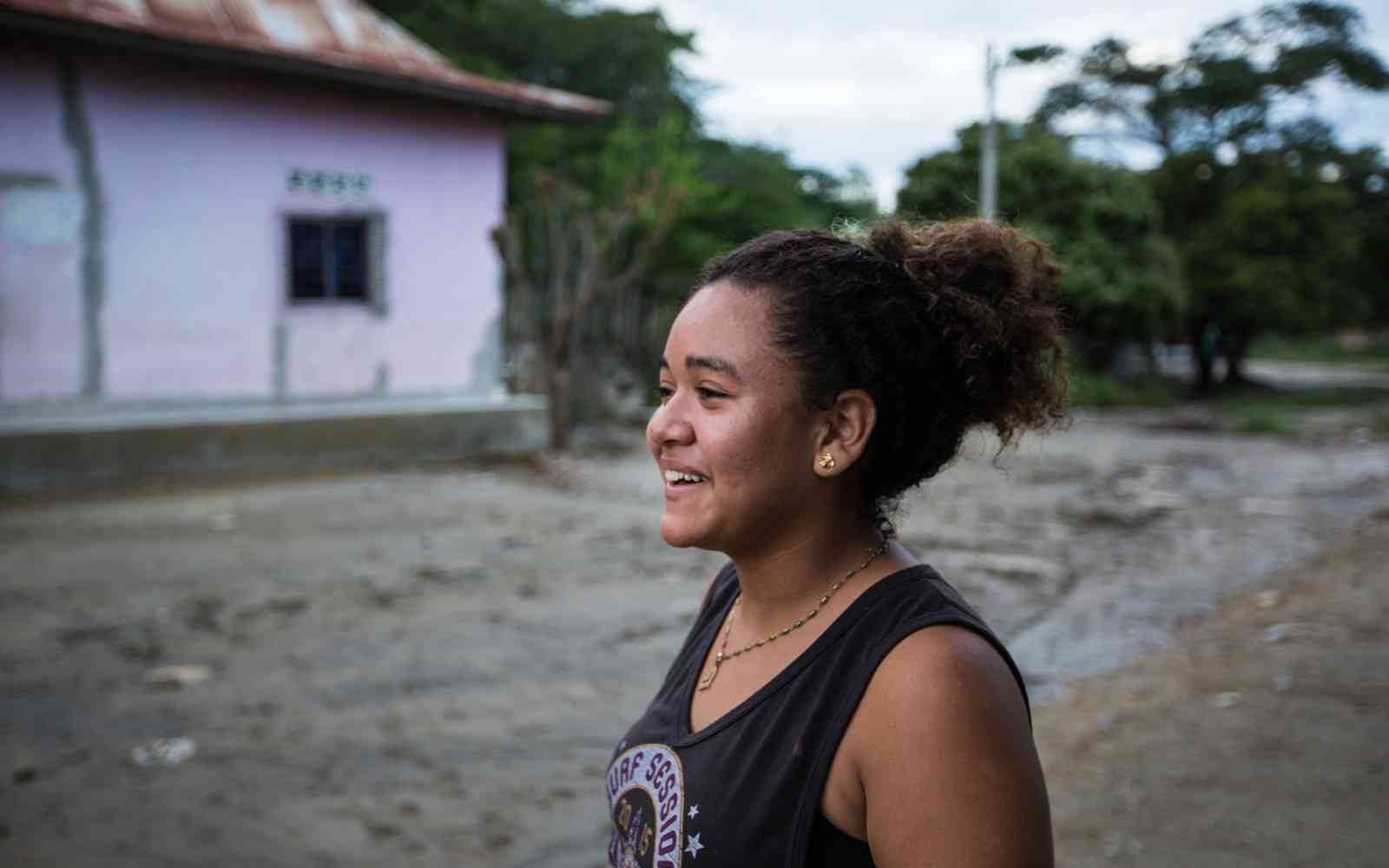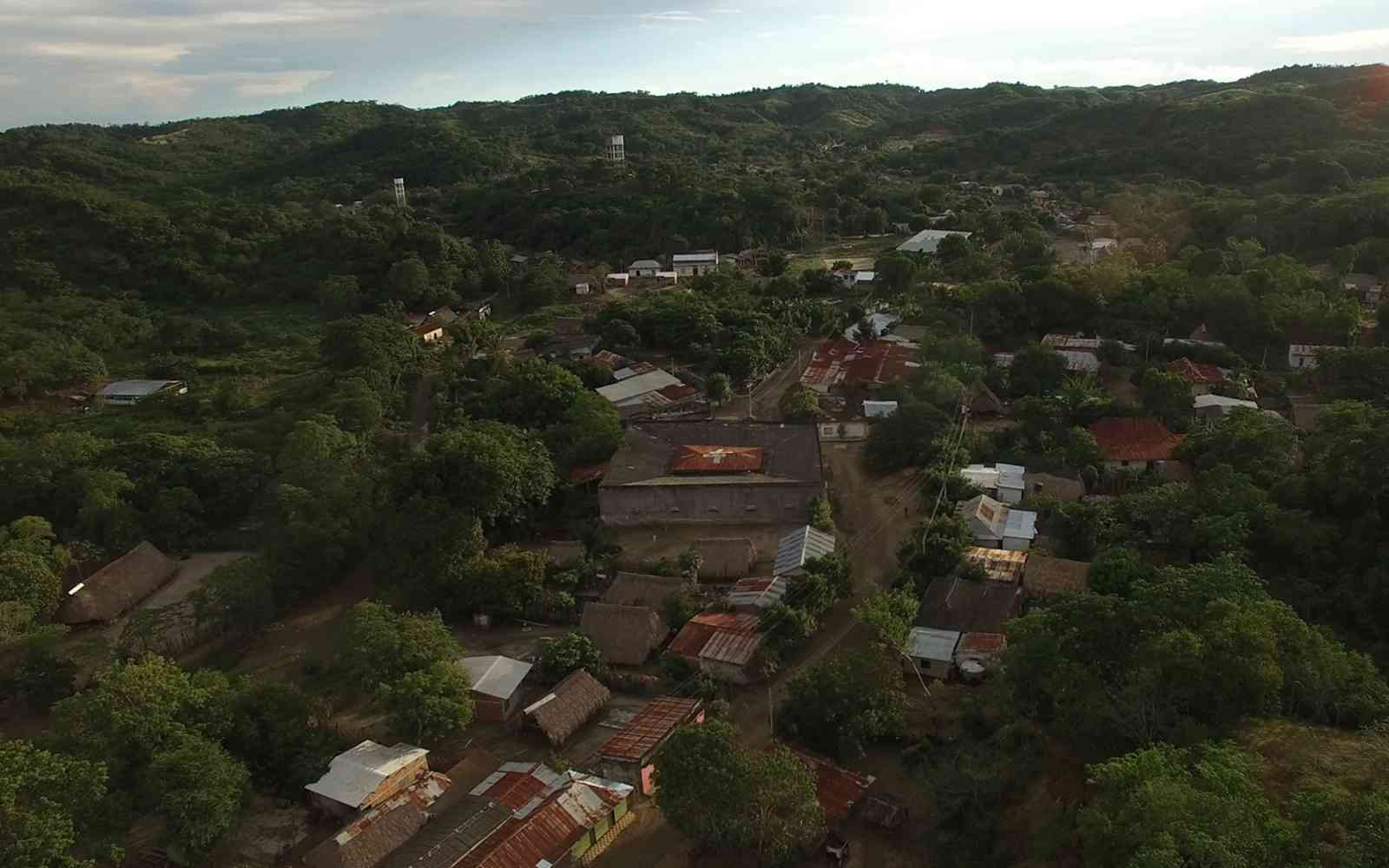The United Nations Office for Project Services (UNOPS)

Investing in homes to reduce poverty and hunger
The vast majority of Colombia’s poor live in rural areas. Forty-five percent of the population live under the national poverty line, surviving on less than $1.25 per day.
In the second chapter of this four-part series, we look into the lives of two families taking part in a Government project to improve 50,000 homes nationwide. Here, we see how social housing can go beyond simply building better places to live, to provide real economic benefits.

DENIS AND RAFAEL
Denis Bohorquez and Reinaldo Rafael Restrepo's home is in the tiny village of Santa Clara. This is a community of twenty-five families living in the Mountains of María, a remote region on the fringes of the West Andes.
In Santa Clara there is no access to power or water services.
Landslides are common here, which often make narrow mountain tracks impassable. When it rains, roads can become rivers in a matter of minutes.
Today my children had to walk to school. Not even the motorcycles could reach the village.

In this environment, Denis and Rafael raised ten children.
The family makes a living from farming. They grow tobacco, corn, cassava, sesame, sweet potatoes and beans, and keep poultry, pigs and dogs.
To upgrade Denis and Rafael's home materials often needed to be transported using donkeys – around seven tonnes in total.
We lived differently before. My husband used to fetch water. We shared our kitchen with the animals.

Construction workers usually come by to order some food. We now benefit from some extra revenue, which is really helpful.
With an engineer and social worker, Denis and Rafael helped to plan upgrades to their home.
They designed a new kitchen, with a sink and a wood-burning stove. A new water system was installed so they have access to clean water year round.
With running water for the first time, Denis saw a new opportunity. She was able to start a business - a small café – which she runs from her house. When the opportunity arises, she now sells meals for 6,000 pesos – around $2 a person.
Her customers, as with everyone in the community, are friends. They helped construct her new kitchen and were trained in basic building skills in the process.
Now they are self-employed builders, working to improve living standards across their community by upgrading more homes.

I like my house and I don’t want to leave. I want to keep improving this house every day.

Mari Luz and Bolívar
Two-hundred kilometres away from Santa Clara, in the region of Atlántico, Mari Luz Otero Pérez and Bolívar López live in the town of Luruaco.
This area in the eastern part of Colombia is best known for its lake. Marshes surrounding the lake support agriculture and fishing – a primary source of income for local communities. Mari Luz and Bolívar’s family also make a living from fishing in the lake.
Life in our old home was very different. When it rained, the fire would go out. We couldn’t cook when it was raining.
“Our family works all day and night. We fish in teams. One group goes at 5 a.m. and comes back around 3 p.m. or 4 p.m. Then another group leaves at 4 p.m. and comes back by 6 a.m. the next day.”
A typical catch is between 5 to 15 kilos. One kilo sells for around $2.
Mari Luz and Bolívar now run a small business from their family home. Fish are cleaned and weighed, and sold to customers who walk through the house to buy fish in her kitchen. She also sells a range of dry food.
For Mari Luz, keeping the environment clean is doubly important – for both her family and customers.

Before I had to rinse everything – cockroaches, mice and geckos would walk on the food, dust would fall from the mud walls, everything was very dirty.
While most of the community are connected to the main water supply, service is irregular. When water is unavailable, many residents are forced to rely on water from the lake, which is unsuitable for human
consumption.
Mari Luz helped design a new kitchen for the family. Before, it was made of mud and a wooden pallet. Now it is made of bricks and concrete, with walls and a floor. A woodstove was replaced with a gas cooker to reduce smoke. Tiles were used to create cooking surfaces that are easier to keep clean. A rainwater tank means there is no longer a need to use lake water when clean water supplies are unavailable.
“People like to buy from me because they know it has been prepared in a clean environment.”
We must cherish it [our new kitchen], enjoy it, and take good care of it.
Project details
"50,000 Homes" is a national initiative of the Government of Colombia. UNOPS is an implementing partner, tasked with upgrading around 4,000 individual homes for approximately 20,000 individuals across the country.
In Santa Clara, homes for all 25 families in the community were upgraded.
Of the more than 20,000 residents of Luruaco, nearly 5,000 have poor quality housing. In Luruaco, UNOPS improved homes for approximately 750 people in 150 families, focusing on those most in need of better living conditions.
How it works
![]()
1. Local governments work with communities to identify families who are most in need of help.
2. UNOPS assesses each home, focusing on sustainability factors – for example, families must own their homes, buildings must meet minimum safety standards and be in a stable geographic location.
3. Families who meet the criteria are allocated approximately $3,000 each to improve their homes. This sum can be divided between a kitchen, a bathroom, a roof, a floor or an extension in any way.
4. A UNOPS engineer works with a social worker and each family to design individual plans to upgrade each property. This is based on the family’s needs, social priorities in the home or community, and the best architectural options.
5. Once plans are agreed it takes around four weeks to upgrade each home.










